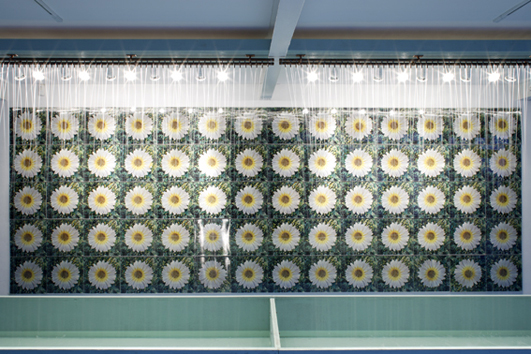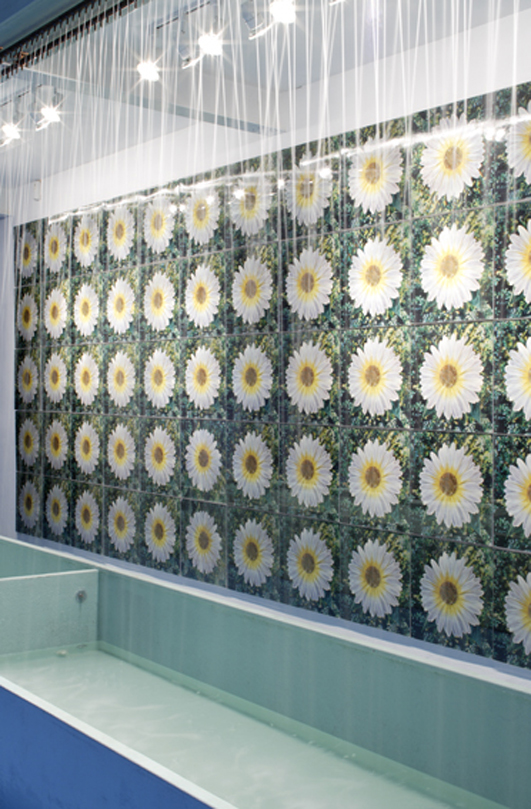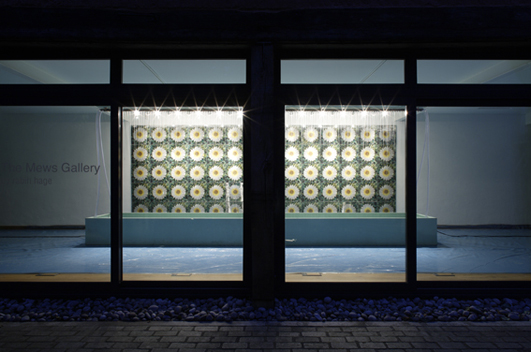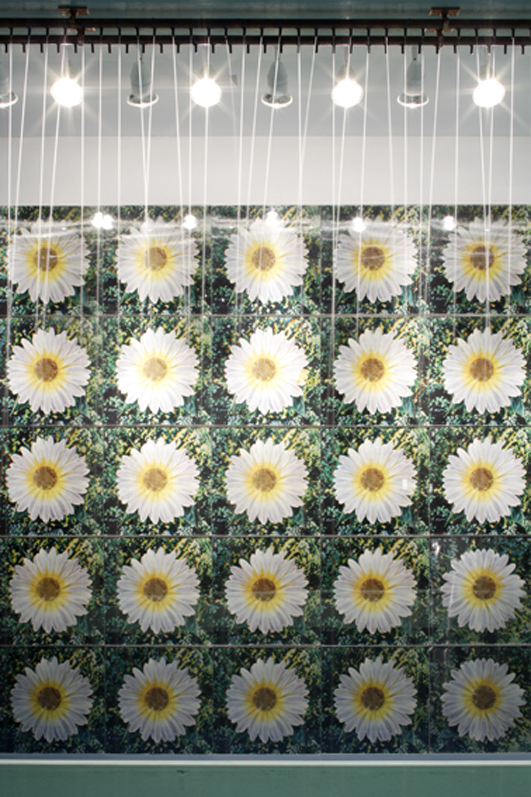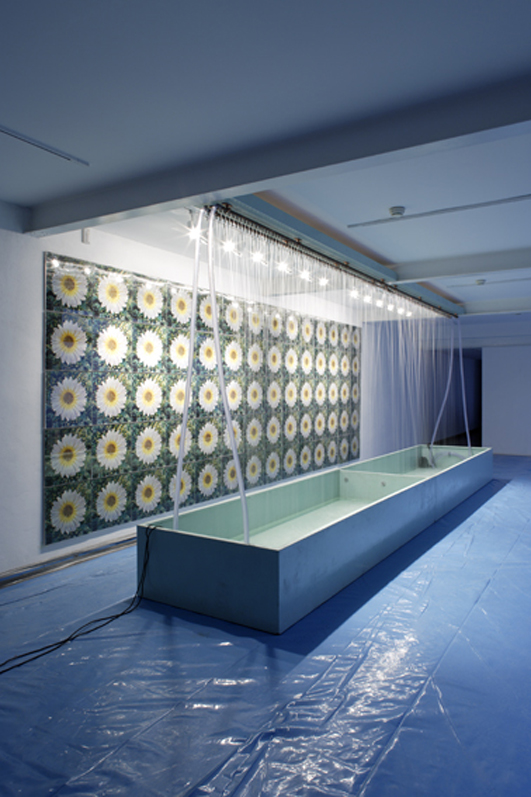
Andy Warhol Rain Machine (Daisy Waterfall)
London, England
October - December 2008
The Genius of the Rain Machine
In Los Angeles in February 1969, Andy Warhol met with Maurice Tuchman and modern art curators at Los Angeles County Museum of Art to visit several Los Angeles companies with the intention of collaborating on the Art and Technology project. At that time he also attended the opening of Bruce Nauman's show of self-portrait holograms at Nicholas Wilder Gallery.
Observing his reaction to this exhibition Maurice Tuchman proposed to Andy Warhol that he consider working with a company that specialised in visual imagery, such as holography or 3-D photography. Andy Warhol was intrigued to review literature on such technology that LACMA sent to him in New York, and constructed, in his studio, three mock-ups to be combined with a 3-D image.
These mock-ups depicted a snowstorm, with a ë4X8' wood frame, a simple wind machine, and a rain machine: circulating water fell in strands into an artificial grass bed, sidelighted to suggest sparkling beads. Andy Warhol ëthought vaguely about imagery such as a sphere or cubeí, as documented by Jane Livingston in A&T, A Report on the Art and Technology Program of the Los Angeles County Museum of Art [1971].
By June 1969 Andy Warhol was connected with Cowles Communications in New York and contracted with LACMA to create work for A&T, specifically for the Preview of this exhibition at EXPO 70 at Osaka and a year later at LACMA.
In August 1969 Andy Warhol decided to utilise a flower image and repeat it serially, with the lenticuar photographic process, labelled Xography by Cowles Communications. It was decided to construct the work in New York and transport it to Osaka and Los Angeles.“Andy continually placed us,” writes Jane Livingston, “in the position of weighing the merits and disadvantages of numerous possibilities. Sometimes he would discard altogether one proposal as for example, in the case of the rain machine, which we visualised as an enclosed and sophisticated mechanism, and which he decided should be presented crudely.”
At a meeting in New York in November 1969 Andy Warhol met with the fabricator of the rain machine and Maurice Tuchman. The artist decided to have five disparate panels, each 4X8 feet, to be placed at time of installation. He also wanted two parallel layers of water rather than a single screen. In this meeting Andy Warhol decided to simply display the rain producing mechanism forthrightly rather than having them encased. He wanted a ‘ghostly’ effect.
At the installation in the US Pavilion the artists on site ‘felt the Warhol to be one of the most compelling works in the exhibition because of its strangely tough and eccentric quality.’
One problem in this installation at Osaka was not to be completely overcome: the illusion of depth conveyed by the images carried only about ten feet. For the exhibition at LACMA the following year it was determined to have each image depict not four but one greatly enlarged daisy, and technical improvements were to allow the 3-D illusion to project a much further distance.
As the conclusion of EXPO 70 it was agreed to destroy the 3-D panels, which had been water damaged during the 6 month run of the show, and the rain machine was discarded as well. The same fate was to await the prolonged exhibition of the Rain Machine at LACMA in 1971: after five months of unprotected continuous exposure to water the daisy panels were damaged and were destroyed at the end of the show. A decision to discard the rain machine was also enacted.
In due course the Andy Warhol Rain Machine in the permanent collection of the Warhol Museum was to be covered in plexiglass. The 70 panels that comprise the Rain Machine on view here were enframed for the exhibitions at Cologne and New York in 2002. For these presentations the rain machine was fabricated according to the earlier plans and wishes of Andy Warhol as they are manifest in the installation at the Andy Warhol Museum.
